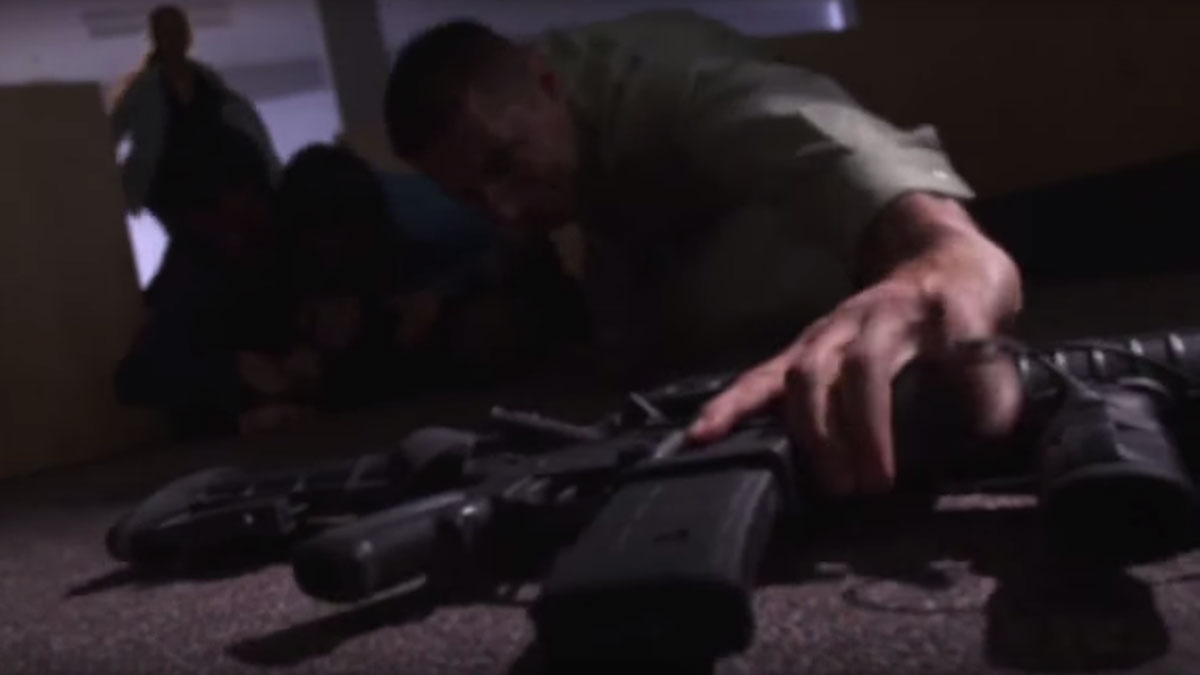University warns that campus shootings aren’t limited to US schools
 Screenshot
ScreenshotSchool shootings are on the rise, and the University of Alberta is warning students against assuming they only happen in the United States.
In 2014, Harvard University released a study that revealed mass shootings — which are defined as incidents in which at least four people are injured or killed by gun — have tripled since 2011, with many taking place in schools and universities. Additionally, a recent study revealed there have been 142 fatal school shootings in the United States since the 2012 Sandy Hook Elementary School massacre, in which 20 children between the ages of six and seven were shot and killed.
Philip Stack, the associate vice-president of Risk Management Services at the U of A, said he believes the increase in American school shootings can be attributed to a number of factors.
“There’s certainly some evidence that mental health can have some aspect to this, but that’s not always the case,” he said.
“I think the U.S. is a unique situation because of their very different laws associated with gun control, and their culture associated with guns.”
However, Stack cautioned against complacency, saying that Canada is not immune to mass shootings despite stricter gun control. He alluded to incidents like the 1989 École Polytechnique massacre in Montreal, the 2012 Eaton Centre shooting in Toronto and the 2012 HUB Mall shooting at the U of A.
“These types of active shooter situations (are) far more prevalent in the U.S. than other countries, but that is not to say that they can’t happen here and haven’t happened here,” he said.
2015 has so far seen 294 mass shootings in the United States — about seven per week. Since Oct. 1, there have been 12 deaths caused by school shootings, including 10 as a result of the Umpqua Community College shooting in Oregon. One person was killed after someone opened fire outside a Texas Southern University Dorm on Oct. 9, and another student died after a shooting at Northern Arizona University on the same day.
When asked how the U of A can decrease the likelihood of a shooting occurring on campus, Stack said that there is no simple solution.
“All of our campuses are open and easy-accessible,” he said. “However, the university has a series of very good groups and services to try to prevent these things from occurring … (like) our protective services, the Office of Safe Disclosure, (and) resident assistants in our residence facilities.”
Following the 2012 HUB Mall shooting, in which three security guards were killed, the U of A’s Protective Services produced a Youtube tutorial on how to respond to an active shooter situation. The video demonstrates three courses of action: get out, hide and, as a last resort, fight.
“(The HUB Mall shooting) elevated awareness that these kinds of situations can occur on our campuses,” Stack said. “We determined that (it was) the right time to bring this kind of health and safety information to our campuses.”
Though there is not a specific profile for all school shooters, Stack said that signs of someone who may bring harm to themselves or others in the form of a school shooting include degradation of general appearance, removing themselves from social engagements and making threatening statements both verbally or on social media.
“Health and safety is a shared responsibility,” Stack said.
“We need to rely on the entire campus community. There are general signs of individuals at risk of hurting themselves or others, and we need to know what those signs are, we need to educate our community and we need our community to help identify those people if (they) see them.”





Even in the US, lightning has killed more people since 1985 than school shootings have.
Seriously, this could indeed happen anywhere but it is such a fantastically rare occurrence that people do not need to live in fear of it, or base all our laws around preventing it.